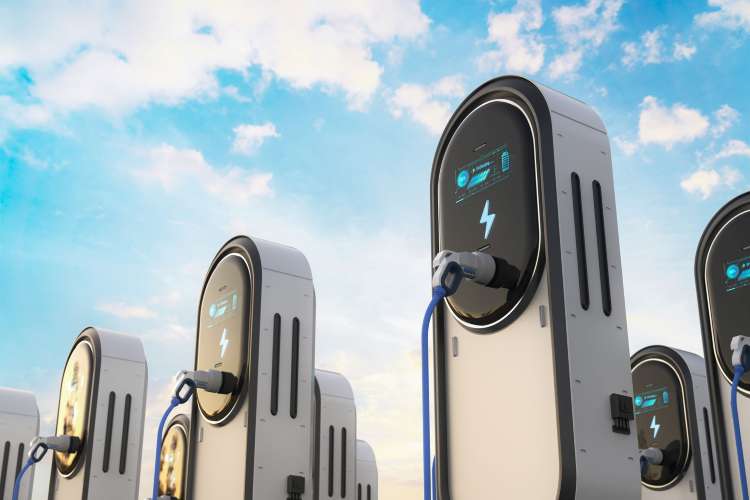Redefining the goals of economic development and sustainability is among the defining challenges of our time. India, like many others, has pledged to achieve net-zero emissions by 2070. It has made impressive progress in scaling up renewable energy. Yet, the shift to clean mobility—particularly EVs—remains fraught with obstacles. With the transport sector accounting for nearly 14% of India’s total greenhouse gas emissions, decarbonising mobility is no longer optional; it is imperative.
Electric vehicles are transforming global transportation and promise a cleaner, greener future. India, too, is steadily advancing towards EV adoption. In this context, the re-entry of Tesla into the Indian conversation, after two false starts, adds a new dimension. But the question remains: are EVs the panacea they are often made out to be? And is India ready—both structurally and strategically—to embrace them as part of its climate and industrial policy?
READ I Trump’s crypto wave threatens India’s rupee sovereignty
The need for urgency—and infrastructure
India’s major cities—Delhi, Mumbai, Bengaluru—are already gasping under the weight of vehicular emissions. Air quality routinely falls into hazardous territory, and with climate extremes like heatwaves intensifying, the urgency for cleaner transport systems is growing. Electrifying mobility can reduce India’s dangerous dependence on imported fossil fuels, which make up 85% of its crude oil consumption.
However, the shift to EVs faces deep structural limitations. A patchy charging infrastructure is among the most significant. India currently has just one public charger for every 135 EVs, and only 25,000 charging stations across the country. Meeting the ambitious target of 3.9 million chargers by 2030, according to a recent report by Gamechanger Law Advisors and Speciale Invest, will require massive public-private coordination and capital.
The Indian road network also presents a unique challenge. Poor road conditions, extreme temperatures, and inadequate service support could compromise EV performance. Any global player, including Tesla, must design and deliver products suited for these realities.
Policy incentives and protectionism
The automotive market in India is undergoing a cautious but determined transformation. Government projections suggest that by 2030, 80% of two- and three-wheelers, 40% of buses, and 30% of private cars could be electrified. To attract foreign investment, India recently reduced import duties on EVs to 15%—but only for companies committing over $500 million towards domestic manufacturing.
While such incentives may benefit players like Tesla, policy unpredictability remains a deterrent. Frequent changes in EV regulations create planning ambiguity. Furthermore, the government’s rejection of a $1 billion investment proposal from Chinese EV major BYD, ostensibly on national security grounds, shows how geopolitical considerations shape industrial policy.
This protectionist tilt could benefit Western manufacturers, but it raises questions about competition, innovation, and market access for domestic players.
Trump, tariffs, and Tesla’s gamble
Tesla’s renewed India push comes at a politically sensitive time. US President Donald Trump has publicly criticised Elon Musk’s plans to expand manufacturing in India. Labelling it a betrayal of American industry, Trump has backed a 26% tariff on Indian goods, part of a wider campaign to penalise outsourcing and promote domestic jobs.
This puts Tesla in an awkward position. As Musk eyes India’s booming premium car segment, he also risks alienating a powerful political ally at home. The 90-day pause on these retaliatory tariffs—announced in May 2025—only deepens the uncertainty. For India, it’s a moment of geopolitical balancing: to welcome investment without becoming collateral in someone else’s trade war.
EVs and the domestic industry ecosystem
Tesla’s entry could trigger broad ripple effects across India’s automotive supply chain. Several Indian firms already supply components to global EV makers, and the arrival of Tesla could deepen those linkages, create jobs, and spur innovation. With global manufacturers rethinking their supply dependencies post-COVID, India stands to benefit as an alternative sourcing hub for electronics, electricals, and components.
Yet, the EV market remains small. EVs account for less than 3% of all passenger vehicle sales in India. Tata Motors dominates the segment with a 60% share, while Mahindra and MG Motors cater to middle-income buyers. Tesla’s offerings, however, are priced at a significant premium. The company competes more with BMW and Mercedes than with mass-market vehicles. Without substantial price adjustments—or localised manufacturing—Tesla risks being a niche player in a country where affordability drives volume.
Sustainability: A deeper look
Beyond manufacturing and market access lies the larger question of environmental integrity. EVs are only as green as their supply chains. Lithium-ion batteries—containing lithium, nickel, cobalt—are resource-intensive to produce and challenging to dispose of. India’s battery recycling framework is rudimentary at best. Without rigorous policies for battery reuse and material recovery, the ecological benefits of EVs could be undermined.
Sustainability also means resisting the temptation of green capitalism in its most performative form. Building an EV ecosystem should not merely be about chasing profits or prestige; it must also prioritise long-term environmental balance, energy equity, and social inclusion.
Roadmap for a greener future
The arrival of global giants like Tesla can infuse much-needed momentum, capital, and technology into the electric vehicles sector. But the road ahead requires far more than high-powered branding and aspirational products.
It demands consistent policy, sound infrastructure, and equitable pricing. It calls for investment not just in factories but in ecosystems—charging networks, R&D hubs, recycling systems, and workforce training. And above all, it requires a governance mindset that values sustainability not as a slogan but as strategy.
The question is not whether India should go electric. It is whether it can do so wisely, equitably, and at scale. In this pursuit, will India stay the course—or get caught in the traffic?
Subhajoy Mahanta is a graduate from NIT Durgapur. Dr Tamali Chakraborty teaches Economics at Indian Institute of Management Visakhapatnam. Dr Barun Kumar Thakur teaches Economics at FLAME University, Pune. Views expressed are personal.

